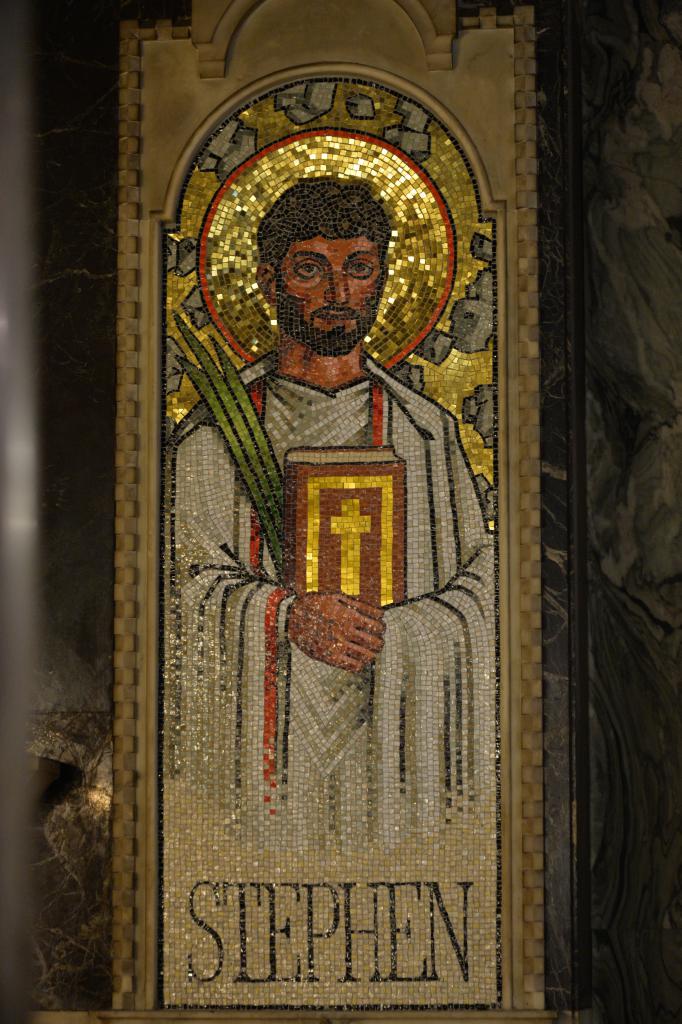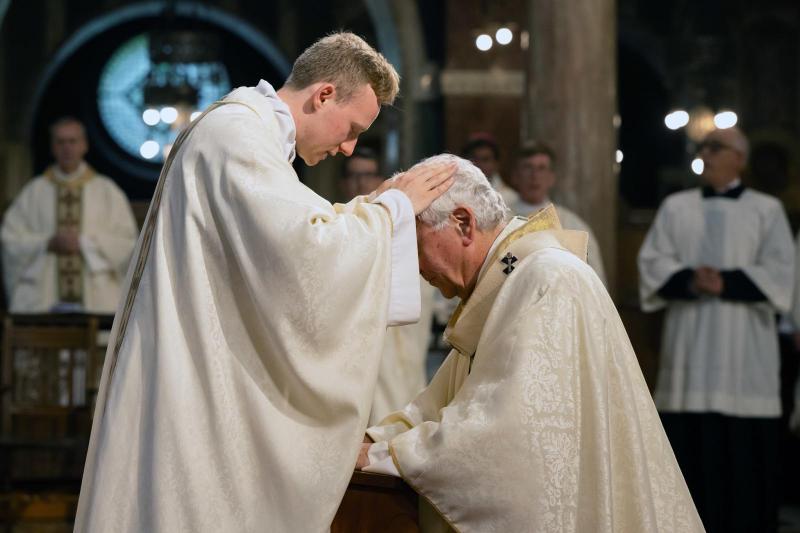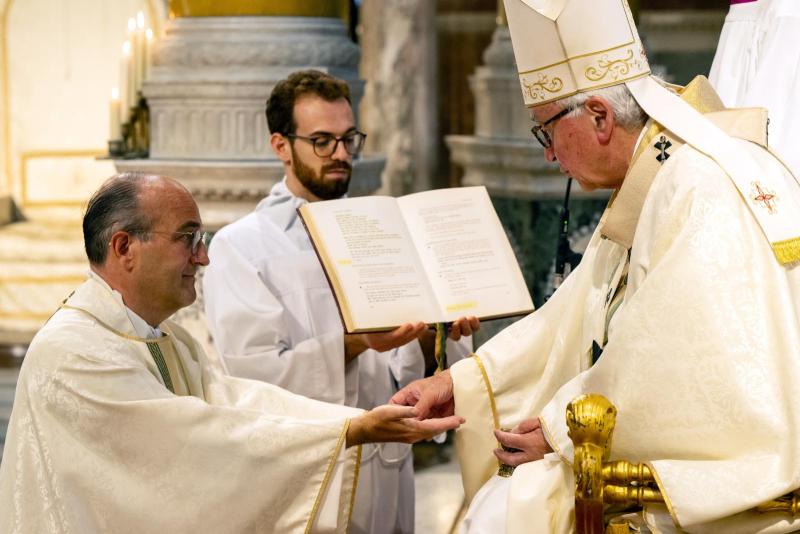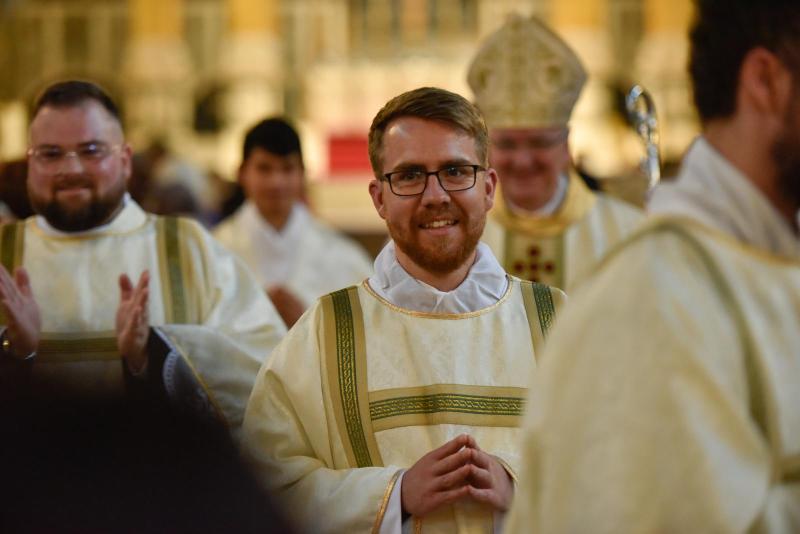The two mosaics on either side of the High Altar in the Cathedral show clearly the elements of the deacon’s life. The mosaic on the left is of St Stephen, the first deacon and the first martyr. He was chosen by Peter to assist with the distribution of food to the Greek-speaking widows in Jerusalem. A chapter or so later in the Acts of the Apostles is the text of his sermon proclaiming the salvation brought by Jesus Christ. For this he was stoned to death and in the mosaic you can see the small boulders at his feet.
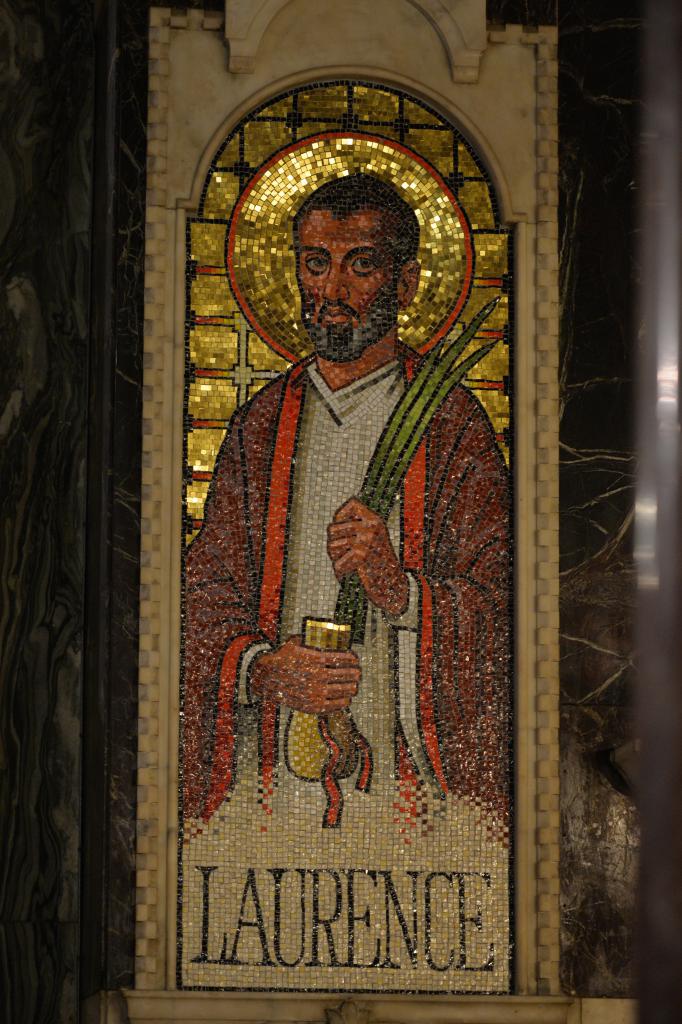
Depicted in the mosaic on the right of the High Altar is
St Laurence, a deacon of Rome. The authorities demanded from him all the riches of the Church and he invited them to fetch the riches from the square the next day. He gathered the poor, the lame, the needy and declared them to be ‘the riches of the Church’ to the authorities, who martyred him on a gridiron.
In our time, permanent deacons continue to serve the ministry of Word as well as the ministry of Charity. Their vocation, in the first place to their wife and family, as well as to their profession, is also to assist in their parish and other works that the bishop might indicate. Some permanent deacons are involved in airport or hospital chaplaincy, others assist in their parish with baptisms and funerals.
To become a permanent deacon, a man needs to be settled in his work and family and looking to serve the world and the Church in a structured way. There are three ‘Come and See’ mornings organised where you can find out more about the permanent diaconate.
12 March: St Edward the Confessor, Golders Green
16 April: Ealing Abbey, Ealing
21 May: St Augustine’s, Hoddesdon
These days run from 10am to noon and wives are most welcome to attend. They are all the same and there is no need to book in advance. Please contact Deacon Anthony Clark on 020 8455 9822 or Deacon Adrian Cullen on 01920 462140 for more information.
This article first appeared in the February 2016 edition of the Westminster Record.
